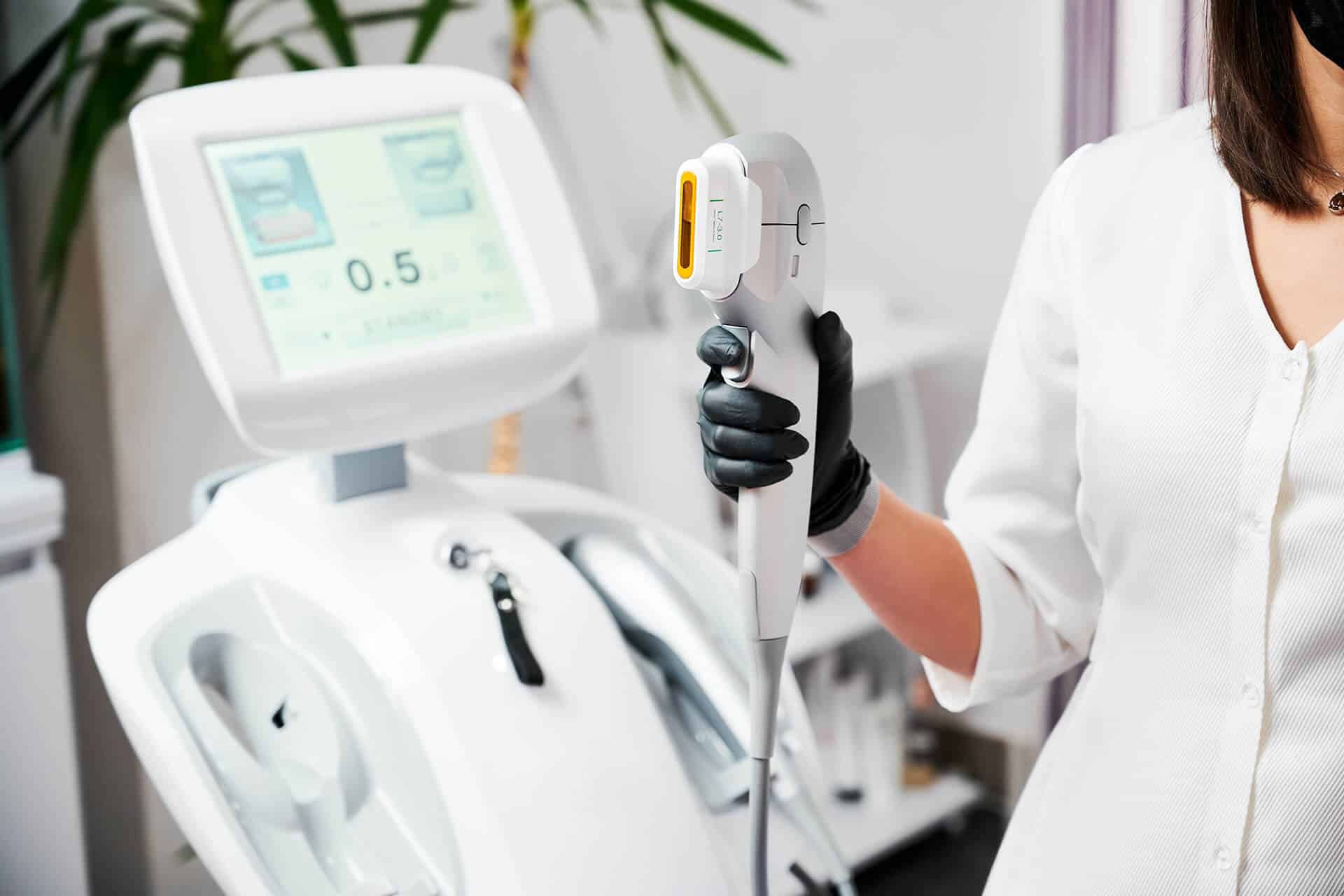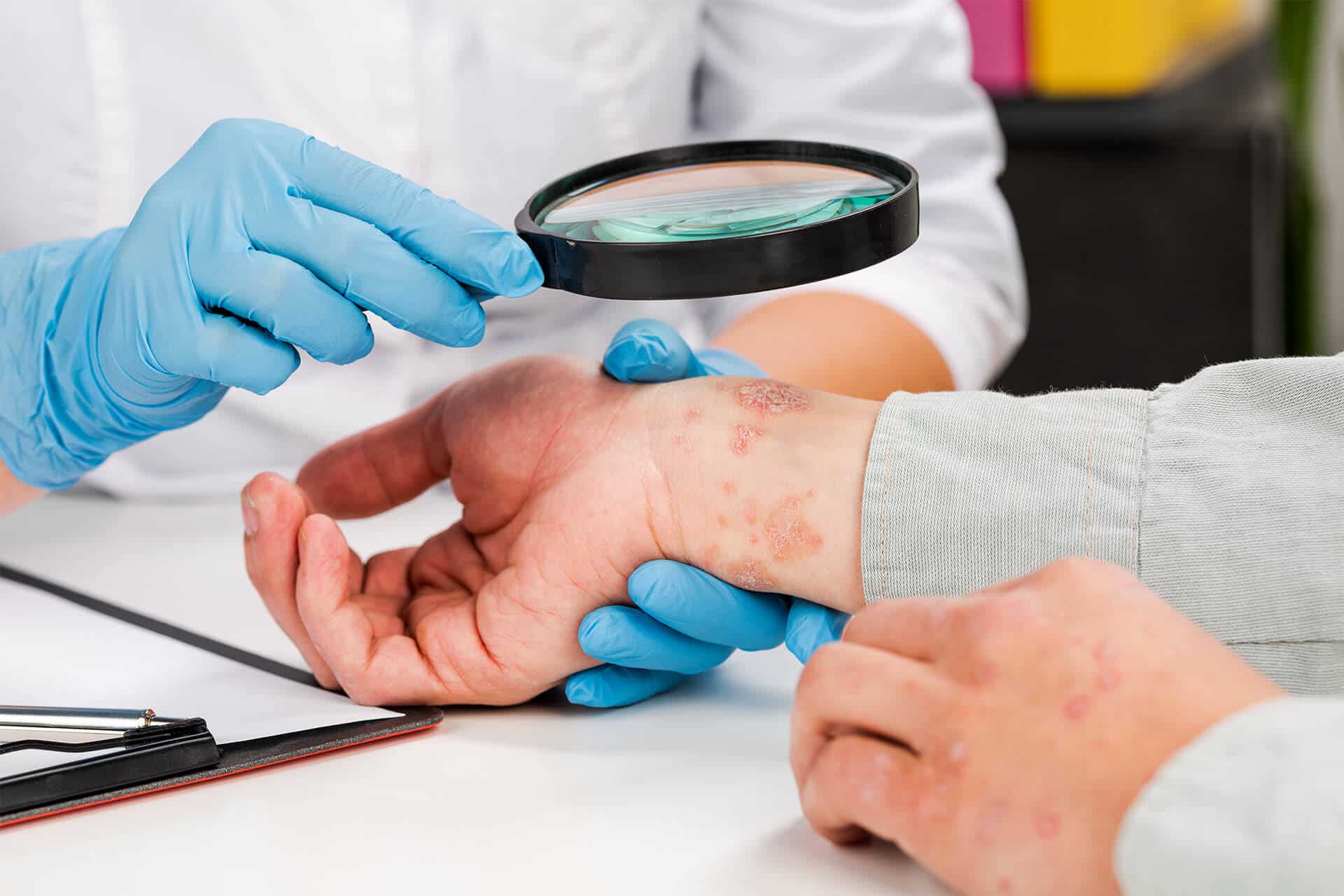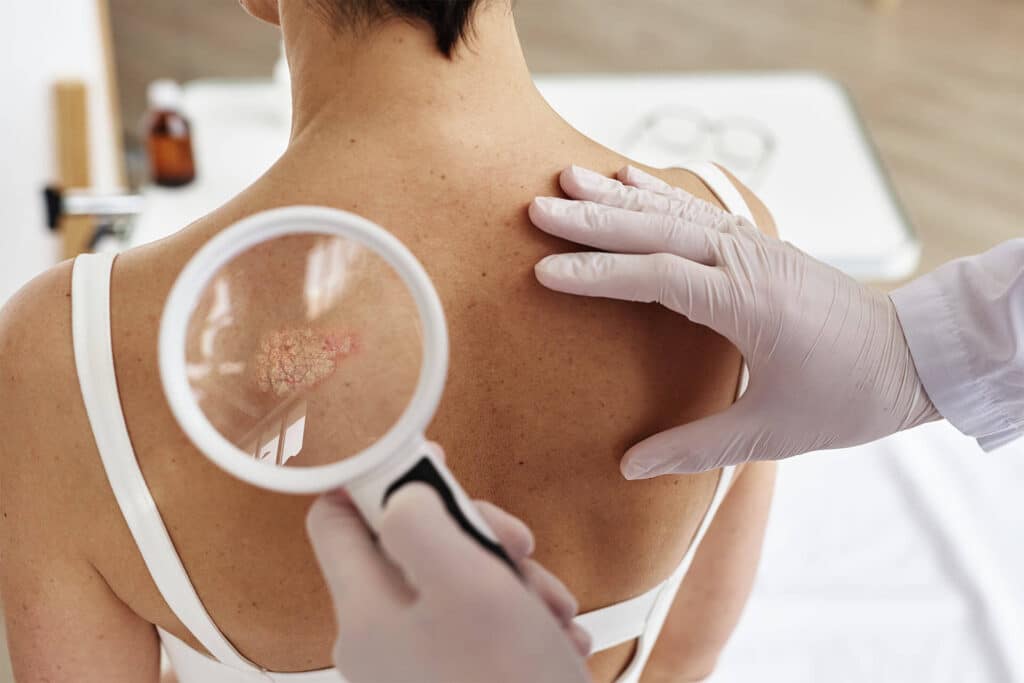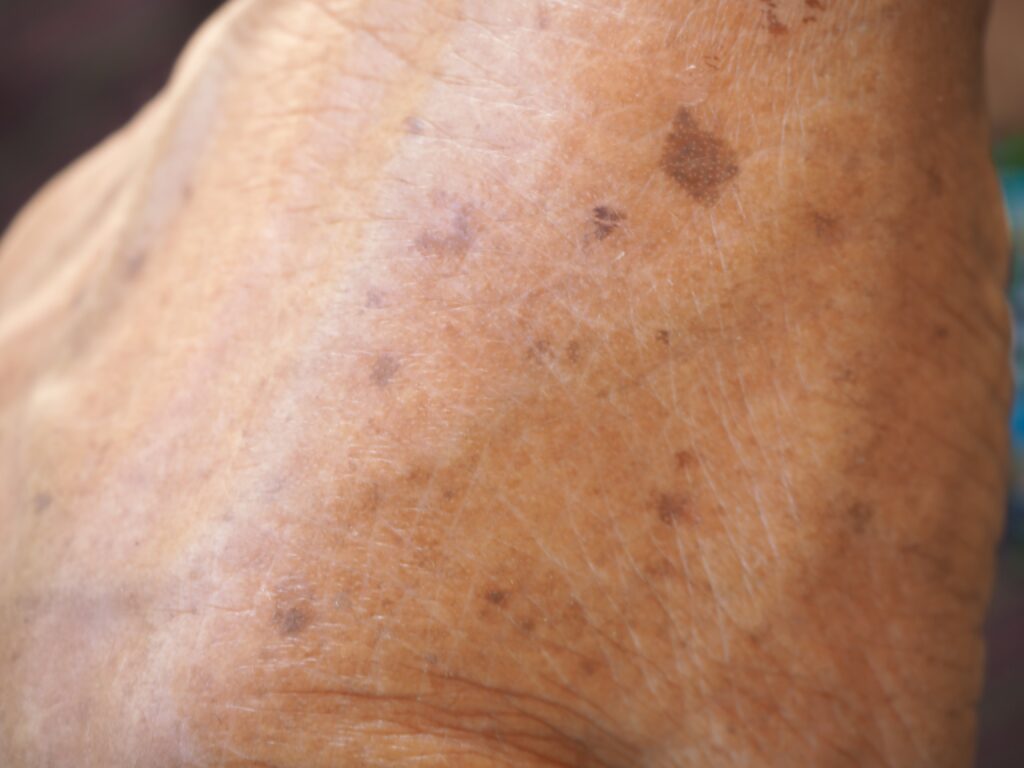At City Dermatology Skin Institute, our Skin Cancer & Melanoma Center provides comprehensive, expert care for patients in Bensalem, Warminster, and the surrounding Bucks County region. Led by Dr. Imran Amir, MD, FAAD, a board-certified dermatologist specializing in the diagnosis and treatment of skin cancer, our center offers full-body screenings, advanced dermoscopic imaging, Mohs surgery, radiation-based treatments, and personalized long-term follow-up.
Whether you need your annual skin exam, evaluation of a suspicious lesion, or treatment for a newly diagnosed skin cancer, we provide the clinical expertise, advanced technology, and patient-centered support you need.
Understanding Skin Cancer: Why Early Detection Matters
Skin cancer occurs when abnormal cells begin to grow uncontrollably, usually due to long-term UV exposure from sunlight or tanning beds. Some skin cancers grow slowly, while others such as melanoma, can spread rapidly and become life-threatening.
Because early skin cancer is often painless and subtle, yearly dermatology exams remain the most effective way to ensure early detection and successful treatment.

Common Types of Skin Cancer and Who is At Risk
Basal Cell Carcinoma (BCC)
The most common form of cancer. Often appears as pearly bumps, non-healing sores, or shiny pink patches.
Squamous Cell Carcinoma (SCC)
May grow more quickly and can become invasive. Often appears as scaly, crusted, or tender growths.
Melanoma
The most serious form of skin cancer. Melanoma may appear as a new or changing mole with irregular borders, multiple colors, or rapid growth.
Who Is At Risk For Skin Cancer?
Everyone, including individuals with darker skin tones. In deeper skin tones, skin cancer may appear on the palms, soles, or under the nails. Routine visits can help catch concerning skin lesions and moles early.
Full-Body Skin Exams & Diagnosis
City Dermatology’s skin cancer evaluation process is designed to provide clarity, reassurance, and accuracy. During your visit, Dr. Amir and his staff examine your skin from head to toe, looking for any concerning lesions, new growths, changing moles, or areas of chronic sun damage.
Our skin cancer evaluation includes:
- Total-body examination
- Advanced dermoscopy for microscopic pattern analysis
- On-site biopsy for fast and accurate diagnosis
- Patient education on what requires treatment vs. monitoring
Dermoscopic magnification allows Dr. Amir to identify characteristics beneath the surface that are not visible to the naked eye. This detailed method improves diagnostic accuracy and reduces unnecessary biopsies.
Patients frequently visit our skin care clinic for:
- Changing moles
- New or unusual growths
- Itching or bleeding spots
- Non-healing sores
- Second opinions
Our approach emphasizes communication and patient education, helping you understand what is normal, what requires monitoring, and what may require immediate treatment.
Skin Cancer Treatment Options
The choice of treatment is always personalized, taking into account factors such as the location of the cancer, the patient’s overall health, and desired cosmetic outcomes. Regardless of the treatment plan, our team provides attentive follow-up care to ensure optimal healing and prevention of recurrence.
Mohs Micrographic Surgery
The gold standard for treating facial and high-risk non-melanoma skin cancers. Mohs micrographic surgery provides the highest cure rate while preserving maximum healthy tissue. Performed under local anesthesia in a single visit with same-day reconstruction.
Surgical Excision
Effective for well-defined tumors on the body or extremities. Removes the tumor with a margin of normal skin for safety.
Superficial Radiation Therapy (SRT)
Superficial Radiation Therapy (SRT) is a non-surgical, painless option for treating certain basal cell and squamous cell carcinomas. SRT uses low-energy radiation that penetrates only a few millimeters into the skin, targeting cancer cells while preserving the surrounding tissue.

Melanoma Diagnosis, Treatment, and Follow-Up
Melanoma requires prompt attention from a dermatologist who understands its behavior and progression. Patients with melanoma are followed closely to ensure early detection of recurrence or new lesions.
Dr. Amir’s melanoma care includes:
- Dermoscopic melanoma assessment
- Accurate diagnostic biopsies
- Surgical excision
- Coordination of imaging and oncology evaluation when appropriate
- Long-term surveillance schedules
Early-stage melanoma often has excellent outcomes when addressed quickly. Patients diagnosed with melanoma are placed on a consistent follow-up schedule, allowing us to monitor for recurrence and educate patients on how to detect new changes early. Our commitment to long-term care means we remain a partner in your skin health even after treatment is complete.
Skin Cancer Prevention and Patient Education
At City Dermatology, our focus extends beyond diagnosis and treatment. We believe in equipping patients with knowledge and habits that support lifelong skin protection. Preventive care includes understanding your personal risk factors, recognizing early changes, and adopting daily sun protection measures.
Dr. Amir provides guidance on:
- Sunscreen selection and daily use
- UV exposure reduction
- Protective clothing
- Avoiding tanning beds
- Monthly self-exams
- Family risk and genetic awareness
Patients with previous skin cancers receive customized surveillance plans.
Awareness and early action help patients take control of their skin health, and we encourage anyone with concerns to schedule an evaluation promptly. When addressed early, skin cancer is one of the most treatable cancers. Reach out for more information on becoming a patient.

Why Choose City Dermatology for Skin Cancer Care?
- Board-certified dermatologist with advanced skin cancer expertise
- Mohs micrographic surgery is available for high-risk or facial cancers
- Multiple treatment options tailored to your diagnosis
- Superficial Radiation Therapy (SRT) as a non-surgical alternative
- Comprehensive melanoma evaluation and surveillance
- Convenient locations in Bensalem & Warminster
- Serving all of Bucks County and Northeast Philadelphia
Proudly Serving Patients Across Bucks County Townships & Northeast Philadelphia
Bucks County
Bensalem, Bristol, Feasterville, Langhorne, Southampton, Levittown, Morrisville, Falls
Northeast Philadelphia
19154, 19114, 19115, 19116, 19136, 19152, 19111, 19149
Warminster Region
Warminster, Warrington, Warwick, Doylestown, Buckingham, Hatboro, Horsham, Abington, New Britain

Common Types of Skin Cancer
- Basal Cell Carcinoma (BCC):
- The most common form of cancer. Often appears as pearly bumps, non-healing sores, or shiny pink patches.
- Squamous Cell Carcinoma (SCC):
- May grow more quickly and can become invasive. Often appears as scaly, crusted, or tender growths.
- Melanoma:
- The most serious form of skin cancer. Melanoma may appear as a new or changing mole with irregular borders, multiple colors, or rapid growth.
- Who Is At Risk For Skin Cancer?
- Everyone, including individuals with darker skin tones. In deeper skin tones, skin cancer may appear on the palms, soles, or under the nails. Routine visits can help catch concerning skin lesions and moles early.
Early Signs and Symptoms of Skin Cancer Identified by Dermatologists in Bensalem and Warminster
City Dermatology’s skin cancer evaluation process is designed to provide clarity, reassurance, and accuracy. During your visit, Dr. Amir and his staff examine your skin from head to toe, looking for any concerning lesions, new growths, changing moles, or areas of chronic sun damage.
Our skin cancer evaluation includes:
- Total-body examination
- Advanced dermoscopy for microscopic pattern analysis
- On-site biopsy for fast and accurate diagnosis
- Patient education on what requires treatment vs. monitoring
Dermoscopic magnification allows Dr. Amir to identify characteristics beneath the surface that are not visible to the naked eye. This detailed method improves diagnostic accuracy and reduces unnecessary biopsies.
Patients frequently visit our skin care clinic for:
- Changing moles
- New or unusual growths
- Itching or bleeding spots
- Non-healing sores
- Second opinions
Our approach emphasizes communication and patient education, helping you understand what is normal, what requires monitoring, and what may require immediate treatment.
Skin Cancer Treatment Options
The choice of treatment is always personalized, taking into account factors such as the location of the cancer, the patient’s overall health, and desired cosmetic outcomes. Regardless of the treatment plan, our team provides attentive follow-up care to ensure optimal healing and prevention of recurrence.
- Mohs Micrographic Surgery
- The gold standard for treating facial and high-risk non-melanoma skin cancers. Mohs micrographic surgery provides the highest cure rate while preserving maximum healthy tissue. Performed under local anesthesia in a single visit with same-day reconstruction.
- Surgical Excision
- Effective for well-defined tumors on the body or extremities. Removes the tumor with a margin of normal skin for safety.
- Superficial Radiation Therapy (SRT)
- Superficial Radiation Therapy (SRT) is a non-surgical, painless option for treating certain basal cell and squamous cell carcinomas. SRT uses low-energy radiation that penetrates only a few millimeters into the skin, targeting cancer cells while preserving the surrounding tissue.
Melanoma Diagnosis, Treatment, and Follow-Up
Melanoma requires prompt attention from a dermatologist who understands its behavior and progression. Patients with melanoma are followed closely to ensure early detection of recurrence or new lesions.
Dr. Amir’s melanoma care includes:
- Dermoscopic melanoma assessment
- Accurate diagnostic biopsies
- Surgical excision
- Coordination of imaging and oncology evaluation when appropriate
- Long-term surveillance schedules
Early-stage melanoma often has excellent outcomes when addressed quickly. Patients diagnosed with melanoma are placed on a consistent follow-up schedule, allowing us to monitor for recurrence and educate patients on how to detect new changes early. Our commitment to long-term care means we remain a partner in your skin health even after treatment is complete.
Skin Cancer Prevention and Patient Education
At City Dermatology, our focus extends beyond diagnosis and treatment. We believe in equipping patients with knowledge and habits that support lifelong skin protection. Preventive care includes understanding your personal risk factors, recognizing early changes, and adopting daily sun protection measures.
Dr. Amir’s provides guidance on:
- Sunscreen selection and daily use
- UV exposure reduction
- Protective clothing
- Avoiding tanning beds
- Monthly self-exams
- Family risk and genetic awareness
Patients with previous skin cancers receive customized surveillance plans.
Awareness and early action help patients take control of their skin health, and we encourage anyone with concerns to schedule an evaluation promptly. When addressed early, skin cancer is one of the most treatable cancers. Reach out for more information on becoming a patient.
Why Choose City Dermatology for Skin Cancer Care?
- Board-certified dermatologist with advanced skin cancer expertise
- Mohs micrographic surgery is available for high-risk or facial cancers
- Multiple treatment options tailored to your diagnosis
- Superficial Radiation Therapy (SRT) as a non-surgical alternative
- Comprehensive melanoma evaluation and surveillance
- Convenient locations in Bensalem & Warminster
- Serving all of Bucks County and Northeast Philadelphia
Proudly Serving Patients Across Bucks County Townships & Northeast Philadelphia
- Bucks County
- Bensalem, Bristol, Feasterville, Langhorne, Southampton, Levittown, Morrisville, Falls
- Northeast Philadelphia
- 19154, 19114, 19115, 19116, 19136, 19152, 19111, 19149
- Warminster Region
- Warminster, Warrington, Warwick, Doylestown, Buckingham, Hatboro, Horsham, Abington, New Britain

FAQ: Skin Cancer & Melanoma Care
Any mole that changes, bleeds, itches, or looks different from your other moles should be evaluated.
Most insurance plans do not require one, but check with your provider beforehand to eliminate any surprises.
Most adults should schedule an annual full-body skin exam. High-risk patients should be seen for a skin exam every 3-6 months.
No, local anesthesia makes the procedure comfortable.
Yes. Skin cancer can occur in all skin tones, and melanoma may appear in less sun-exposed areas. Regular screenings are important for everyone.

